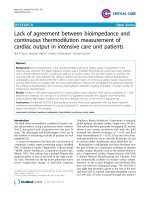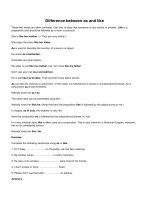Difference between simple and continuous tense forms
Bạn đang xem bản rút gọn của tài liệu. Xem và tải ngay bản đầy đủ của tài liệu tại đây (10.18 KB, 1 trang )
Difference between simple and continuous tense forms
Continuous tenses are often used to talk about more temporary actions and situations. To talk about
longer-lasting or permanent situations we prefer simple tenses.
Note that sometimes both forms are possible in the same situation, with a slight difference of emphasis.
Compare:
I was tired because I had been walking for a long time. (Here the past perfect continuous form is used to
talk about a relatively long but temporary action or situation.)
The castle had stood on the hill for 500 years. (Here the past perfect tense form is used to talk about a
permanent situation.)
Progressive forms put an emphasis on the continuity of an activity. Simple and perfect verb forms, on the other
hand, emphasize the idea of completion.
I had been playing video games for a long time. (Here the emphasis is on the continuity of the situation.)
I had watched all the videos. (Here the emphasis is on the idea of completion.)
Some verbs are not normally used in continuous forms. Examples are: believe, doubt, imagine, know, love,
hate, prefer, realize, remember, suppose, understand, want and wish.
I had known her for a very long time before we got married. (NOT I had been knowing her for a long time
before we got married.)
Stay on top of your writing! Download our grammar guide from www.englishgrammar.org to stay up-to-date.
Powered by TCPDF (www.tcpdf.org)









